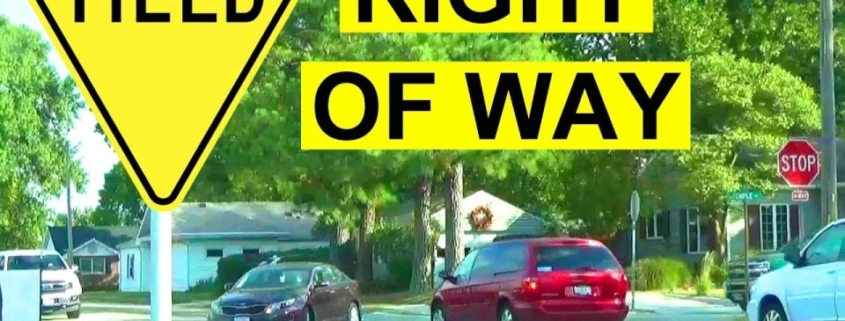Who Has the Right of Way?
The concept of “right of way” is important to understand because the law never really grants the right of way, it simply states when the right of way must be yielded. Right of way can be used when the law permits its use by requiring that others yield the right of way to you. Failure to yield the right of way can lead to very serious car accidents. Every driver, motorcyclist, moped rider, bicyclist, and pedestrian must do everything possible to avoid a crash. When you yield the right of way to another vehicle, you are letting them go before you in the traffic situation.
Under Alabama law, pedestrians must obey all traffic-control devices, such as crosswalk signals, applicable to them, except when they are told to do otherwise by a police officer. When in crosswalks, pedestrians have the right of way only under certain conditions. Pedestrians also have the right of way when there are no traffic-control signals, or when those signals aren’t working. Vehicles must slow down and stop when approaching pedestrians that are in, or close to their lane. Pedestrians are required to use crosswalks when they are available, and they should use the right half of the crosswalk, and they are prohibited from crossing an intersection diagonally unless authorized.
When crossing at someplace other than a crosswalk, pedestrians do not have the right of way. They must yield to traffic and they must also not suddenly leave the curb. On sidewalks, pedestrians have the right of way. It is illegal for pedestrians to walk on the road when there is a sidewalk available. When there is no sidewalk, pedestrians must walk on the shoulder, as far away from traffic as possible. When walking on the road, pedestrians must give the right of way to traffic.
When the right of way concept pertains to motor vehicle operators, the National Highway Traffic Safety Administration suggests remembering these few simple tips in order to avoid a crash. At an uncontrolled intersection, or four-way stop, the first vehicle to stop should be the first one to go. If you pull up to a four-way stop and see a vehicle already there, you should yield right of way to them. Also, if you arrive at an uncontrolled intersection at the same time as another driver, the rule of thumb is to give way to the right. Meaning, that the driver to the right would be the first to proceed. The next tip to remember is that straight traffic has precedence over vehicles that are turning. If you are turning, whether it be right or left, it is your responsibility to yield to the traffic coming or going straight. Next, always pay attention to signage. If you pull up to an intersection that does not have a stop sign but has a yield sign, be sure to yield. And lastly, when it doubt, just wait it out. When you are not sure, it does not harm anyone to wait longer before you proceed. However, this does not apply to instances when you know that you have the right of way, because hesitation could lead to an accident.
If you are involved in an accident, the first thing you should do is contact the authorities and seek medical treatment. The next step you should take is to then meet with a personal injury attorney. The lawyers at Greene & Phillips are available 24/7. You can call us at (251) 300-2000.



